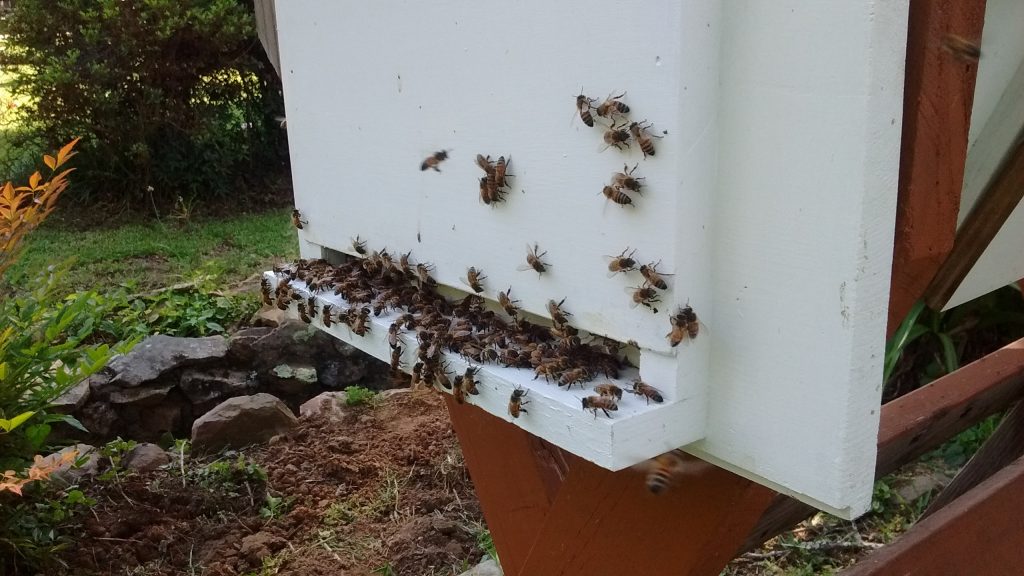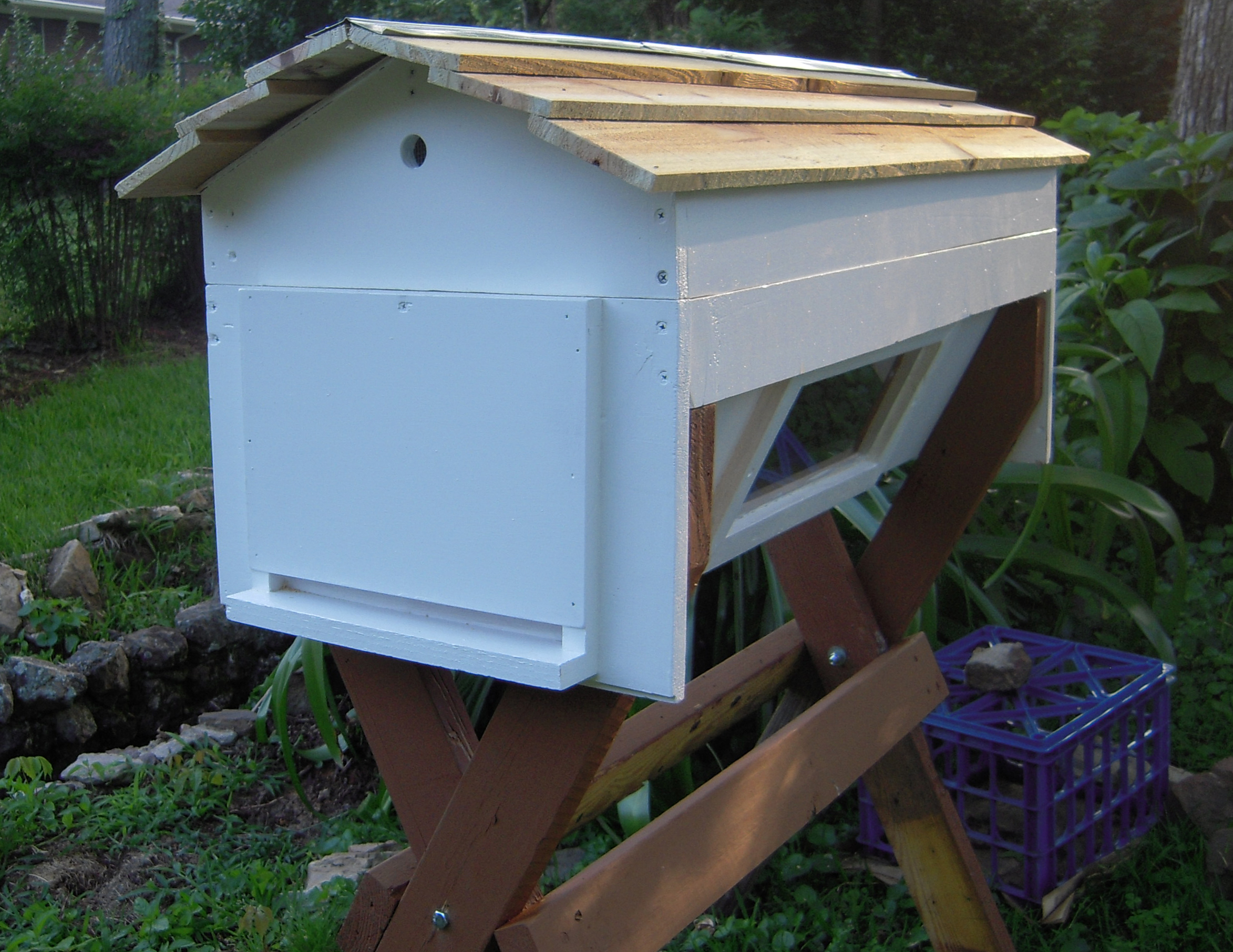A top-bar hive is a rectangular shaped single-story frameless beehive with sloped sides where the comb hangs from removable bars. The bars form a continuous roof over the top of the hive cavity and the bees move horizontally through the space. This style of hive is also referred to as a “Kenyon” or “Tanzanian” top-bar hive.

I settled on a Top-Bar style hive for my first beehive because they are relatively easy to build from scrap wood and common tools. The simplicity of construction is one of the key features of the design. The only critical measurement is the width of the top bars themselves which need to allow room for the comb and ‘bee space’ for the bees to move around. They are also less physically demanding to manage because you don’t have to lift a box full of bees and comb as you inspect the hive and harvest honey. You lift and examine things one bar at a time and opening the hive does not expose the entire hive to to the outside air and suddenly alter the temperature of the colony. Most designs include an observation window on the side which allows you to look into the hive without disturbing the bees at all.

It is easy to spend money on beekeeping if you have it (or a high limit credit card!) There are bee suits, veils, smokers, hive tools, and all the commercial hive components. You can easily drop a thousand dollars getting all the bits and pieces. Then there are the bees themselves. If you buy a queen with a 3 pound pack of worker bees you can easily drop another $150. My personal goal when starting out as a backyard beekeeper was to spend as little as possible and build as much of my own gear as I could.
My top bar hive design is a bit more elaborate than the common basic designs. I added a hinged lid with a pitched roof. But, I still was able to cut and assemble the entire hive in a single weekend.

The Downsides of the Top Bar Hive
The benefits of a top bar hive make it very attractive to the first-time beekeeper. But, the design is not perfect and you need to know the limitations and alternatives before settling on a hive.
Choosing a specific style of beehive is also a choice about your style of beekeeping. The hive management techniques used by top bar beekeepers don’t work with Warré or Langstroth hives. Langstroth style hives are most common for commercial beekeepers, so nearly every pre-made solution for feeding, pest management, honey harvesting and more are designed to work on these types of hives and will not fit in a top bar hive. You will spend a lot of time adapting ideas to fit.
If you plan to do things like cutouts (removing existing bee colonies from walls or other structures) the top bar design will make the process much harder. Attaching existing comb to a top bar is not easy or fun. You will also lose the option of buying a nucleus hive from a local beekeeper because the internal frames will not fit in your hive.
Another drawback is the overall productivity of your colony. Commercial beekeepers use frames inside their hives to support the comb that the bees build. When honey is harvested, they cut the wax cappings off of the comb, place the frames in a spinner and use centrifugal force to extract the honey. The frames keep the comb intact so it can be returned to the hive for refilling. The bees do not need to expend resources rebuilding the comb.
Harvesting honey from a top bar hive involves cutting the comb from the bar and crushing it in a strainer to extract the honey. The bees must rebuild the comb before adding more honey. The result is less honey and more wax for the beekeeper.
Who Should Use a Top Bar Hive
Top-bar beekeeping is best for people who want to keep bees on a modest scale, producing some honey and beeswax, and maintaining a colony or two to pollinate their gardens. The financial investment is low, and the average woodworker can build the hives from readily available materials.


